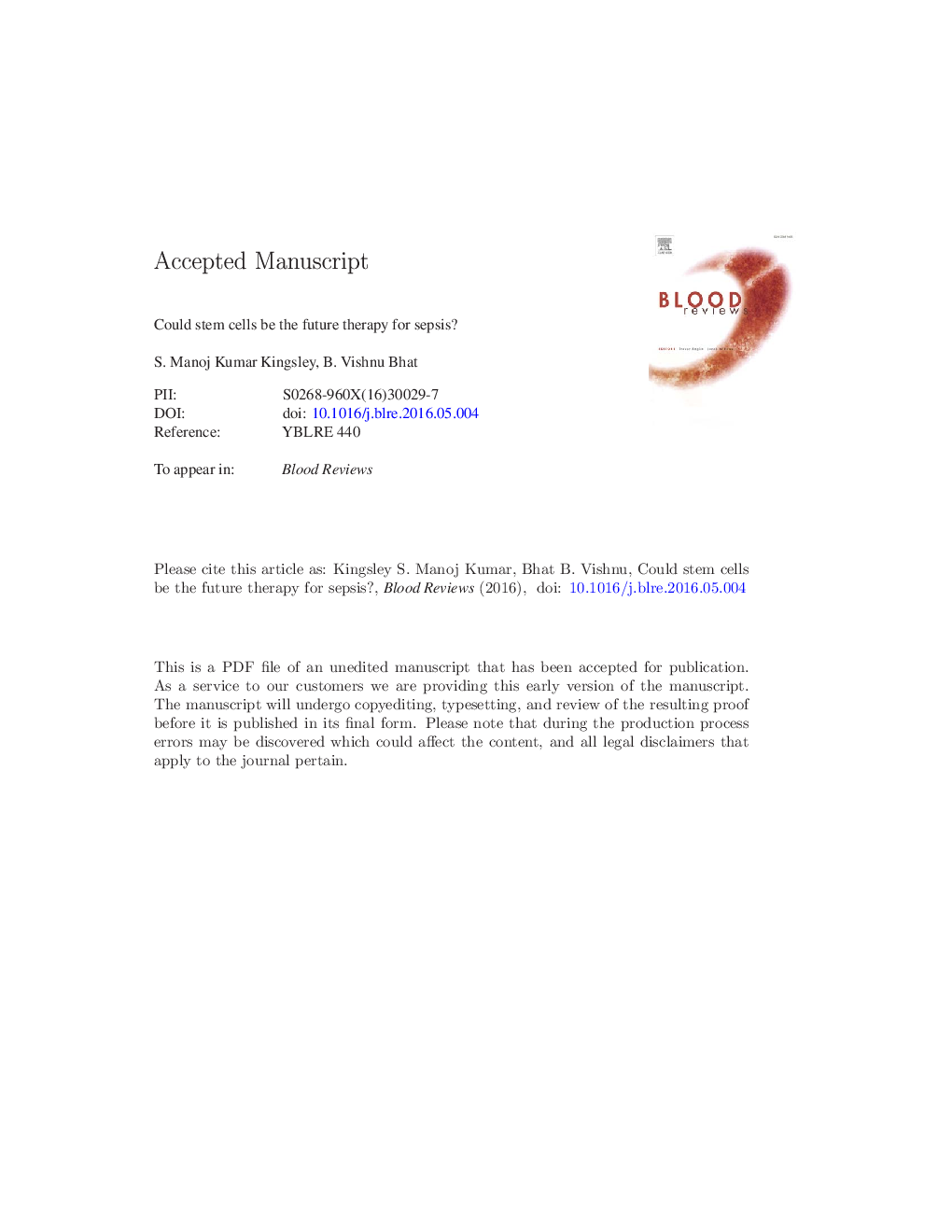| Article ID | Journal | Published Year | Pages | File Type |
|---|---|---|---|---|
| 8432058 | Blood Reviews | 2016 | 61 Pages |
Abstract
The severity and threat of sepsis is well known, and despite several decades of research, the mortality continues to be high. Stem cells have great potential to be used in various clinical disorders. The innate ability of stem cells such as pluripotency, self-renewal makes them potential agents for therapeutic intervention. The pathophysiology of sepsis is a plethora of complex mechanisms which include the initial microbial infection, followed by “cytokine storm,” endothelial dysfunction, coagulation cascade, and the late phase of apoptosis and immune paralysis which ultimately results in multiple organ dysfunction. Stem cells could potentially alter each step of this complex pathophysiology of sepsis. Multiple organ dysfunction associated with sepsis most often leads to death and stem cells have shown their ability to prevent the organ damage and improve the organ function. The possible mechanisms of therapeutic potential of stem cells in sepsis have been discussed in detail. The route of administration, dose level, and timing also play vital role in the overall effect of stem cells in sepsis.
Keywords
HMGB-1RVPSDFADSCsICAM-1PAMPsESCsCLPALTKGFFGFEPCsIDOHGFSAEPAI-1HIEARFALFACEAFSCsBMSCssTNFRSepsis associated encephalopathyPI3KEGFIGFAMSCsMSCsDAMPsAKICOX-2CTLsHSPCsStat1aspartate amino transferaseASTacute kidney injuryAcute lung injuryalanine transaminaseHypoxic ischemic encephalopathyMultiple organ dysfunctiondamage-associated molecular patternspathogen-associated molecular patternsAliIndoleamine 2, 3-dioxygenaseBUNStem cellshuman adipose tissue-derived stem cellsamniotic fluid stem cellsMesenchymal stem cellsBone marrow-derived mesenchymal stem cellsAdipose-derived mesenchymal stem cellshematopoietic stem and progenitor cellsEndothelial progenitor cellscirculating endothelial progenitor cellsEmbryonic stem cellsSepsisCyclooxygenase-2Stromal cell-derived factorepidermal growth factorHepatocyte growth factorKeratinocyte growth factorVascular endothelial growth factorVascular Endothelial Growth Factor (VEGF)fibroblast growth factorInsulin-like growth factorphosphoinositide-3 kinaseRight ventricular pressureCytotoxic T lymphocytessignal transducer and activator of transcription 1Therapeutic interventionPlasminogen activator inhibitor-1intercellular adhesion molecule-1Acute liver failureAcute renal failureblood urea nitrogenPluripotencyPathophysiologyhigh mobility group box-1Soluble tumor necrosis factor receptor
Related Topics
Life Sciences
Biochemistry, Genetics and Molecular Biology
Cancer Research
Authors
S. Manoj Kumar Kingsley, B. Vishnu Bhat,
